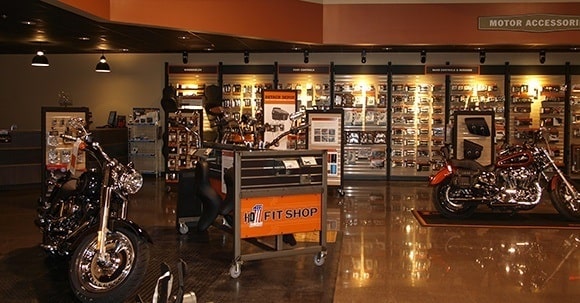Must-Have Motocross Gear: Elevate Your Riding Experience Today
Must-Have Motocross Gear: Elevate Your Riding Experience Today
Blog Article
Recognizing the Vital Components of a Bike: A Comprehensive Overview for Fanatics
For motorbike lovers seeking to raise their riding experience and ensure their bikes run smoothly, understanding the necessary components of a bike is critical. Each component, from the engine's intricate workings to the crucial role of the braking devices, not just influences efficiency yet also safety and comfort. This guide will certainly stroll through the basic components that every motorcyclist should be familiar with, enabling informed options in both maintenance and potential upgrades. As we start this exploration, one must ask: just how does each element communicate to create the seamless adventure every fanatic looks for?
Engine Elements

The camshaft plays a critical function in controlling the timing of the engine's valves, guaranteeing the accurate opening and closing necessary for effective gas and air consumption, in addition to exhaust expulsion. This timing is vital to keeping optimal engine performance and performance. In addition, the carburetor or fuel shot system, depending upon the motorcycle design, is accountable for mixing air with fuel in the correct ratio for burning.
The air conditioning system, either air or liquid-based, works to maintain the engine's temperature level within operational limits, stopping getting too hot and guaranteeing long life - motocross parts nz. Each element, thoroughly designed and incorporated, contributes to the seamless operation of the engine, specifying the bike's power outcome and general performance
Transmission System
Indispensable to the motorbike's capability, the transmission system makes certain effective power transfer from the engine to the wheels. This system comprises numerous vital parts, consisting of the clutch, gearbox, and last drive, each playing a vital duty in translating the engine's power right into movement. The clutch, generally run by a hand bar, serves to engage and disengage the engine from the transmission, permitting smooth equipment adjustments and controlled velocity.
The gearbox, usually described as the transmission correct, consists of a set of equipments that cyclists can by hand move through to adjust the bike's speed and torque outcome. These gears are organized in a series that allows the motorcycle to increase smoothly and keep ideal engine efficiency across different rates. The majority of motorbikes make use of a consecutive gearbox, calling for the cyclist to move gears in a predetermined order.
Braking Mechanisms
While comprehending the transmission system is key to using a motorbike's power, just as vital is the capacity to regulate and quit that power effectively, which is where stopping devices come right into play. Brakes are crucial for safety and security and efficiency, supplying the motorcyclist with the needed control to navigate numerous surfaces and conditions. Normally, motorbikes feature two kinds of braking systems: disc brakes and drum brakes.
Disc brakes are more prevalent in contemporary bikes due to their remarkable performance. They contain a brake disc, caliper, and pads. When triggered, the caliper squeezes the brake pads versus the rotating disc, transforming kinetic power right into warm, consequently reducing the wheel. This system uses far better heat dissipation, constant performance, and enhanced stopping power, specifically in damp conditions.
On the other hand, drum brakes, though much less typical, are still found in some bikes. They work by pushing brake footwear against the inner surface of a drum connected to the wheel. While usually much less effective in warm dissipation and quiting power, drum brakes are less complex and more cost-efficient.
Comprehending these stopping systems' subtleties permits riders to preserve their motorcycles properly and appreciate the engineering that makes certain secure and efficient quiting.
Suspension and Steering
Suspension and guiding systems are vital components that considerably affect a motorbike's handling and ride convenience. The shock absorber, informative post including forks at the front and shock absorbers at the back, absorbs road irregularities, enhancing security and control. Front forks, usually telescopic or upside down, compress and rebound to alleviate effects, while back shock absorbers maintain tire contact with the roadway, crucial for grip and safety and security.
Guiding, focused around the handlebars, connects the motorcyclist to the motorcycle's directional control. The guiding head bearings make certain smooth procedure, permitting specific maneuverability. Proper placement and maintenance of these bearings are important for foreseeable steering feedback why not find out more and reducing cyclist tiredness.
The suspension's adjustability is one more crucial element; preload, damping, and rebound setups permit customization to match various riding styles and problems. This adaptability is necessary for enhancing efficiency, whether navigating urban roads or taking on rugged routes. Innovations like digital suspension systems use real-time adjustments, enhancing trip high quality across varied terrains.

Electric Solutions
After making certain a smooth and controlled experience with reliable suspension and guiding systems, interest turns to the electric systems, a crucial aspect of contemporary motorbikes. These systems play a crucial function not only in starting the engine but also in powering different components that improve the performance and safety and security of the motorcycle.
At the heart of a motorbike's electric system is the battery, which shops electrical energy essential for beginning the engine and powering supporting systems - motorcycle shop. The generator or generator, coupled with the rectifier-regulator, makes sure the battery remains charged while the motorcycle is in operation, converting mechanical power right into electrical energy and maintaining voltage degrees
The ignition system, an additional essential element, is liable for igniting the air-fuel mixture in the engine's cylinders. Modern bikes frequently make use of an electronic ignition system, providing better efficiency and reliability contrasted to typical systems.
Lighting systems, consisting of headlights, tail lights, and indicators, are likewise important, making sure presence and safety for the motorcyclist. Added electronic parts such basics as sensing units, control units, and displays add to sophisticated functions like fuel injection management, anti-lock braking systems (ABDOMINAL MUSCLE), and digital dashboards, better boosting the riding experience.
Final Thought
A detailed comprehension of a bike's important parts, consisting of the engine, transmission system, braking devices, suspension, guiding, and electrical systems, is vital for lovers aiming to enhance comfort, security, and performance. Mastery of these components allows for informed decisions relating to maintenance and upgrades, ultimately improving the riding experience. By integrating this expertise, bikers can ensure their motorcycles operate at peak performance and reliability, consequently making best use of both pleasure and long life of their vehicles.
For motorcycle enthusiasts looking to raise their riding experience and guarantee their bikes run efficiently, comprehending the important elements of a motorcycle is vital.Important to the motorbike's functionality, the transmission system guarantees reliable power transfer from the engine to the wheels.While recognizing the transmission system is key to utilizing a motorcycle's power, similarly important is the capability to control and quit that power properly, which is where stopping mechanisms come right into play. Usually, bikes feature two kinds of stopping systems: disc brakes and drum brakes.
A thorough understanding of a bike's essential parts, consisting of the engine, transmission system, braking devices, suspension, guiding, and electrical systems, is essential for enthusiasts intending to maximize comfort, efficiency, and safety.
Report this page